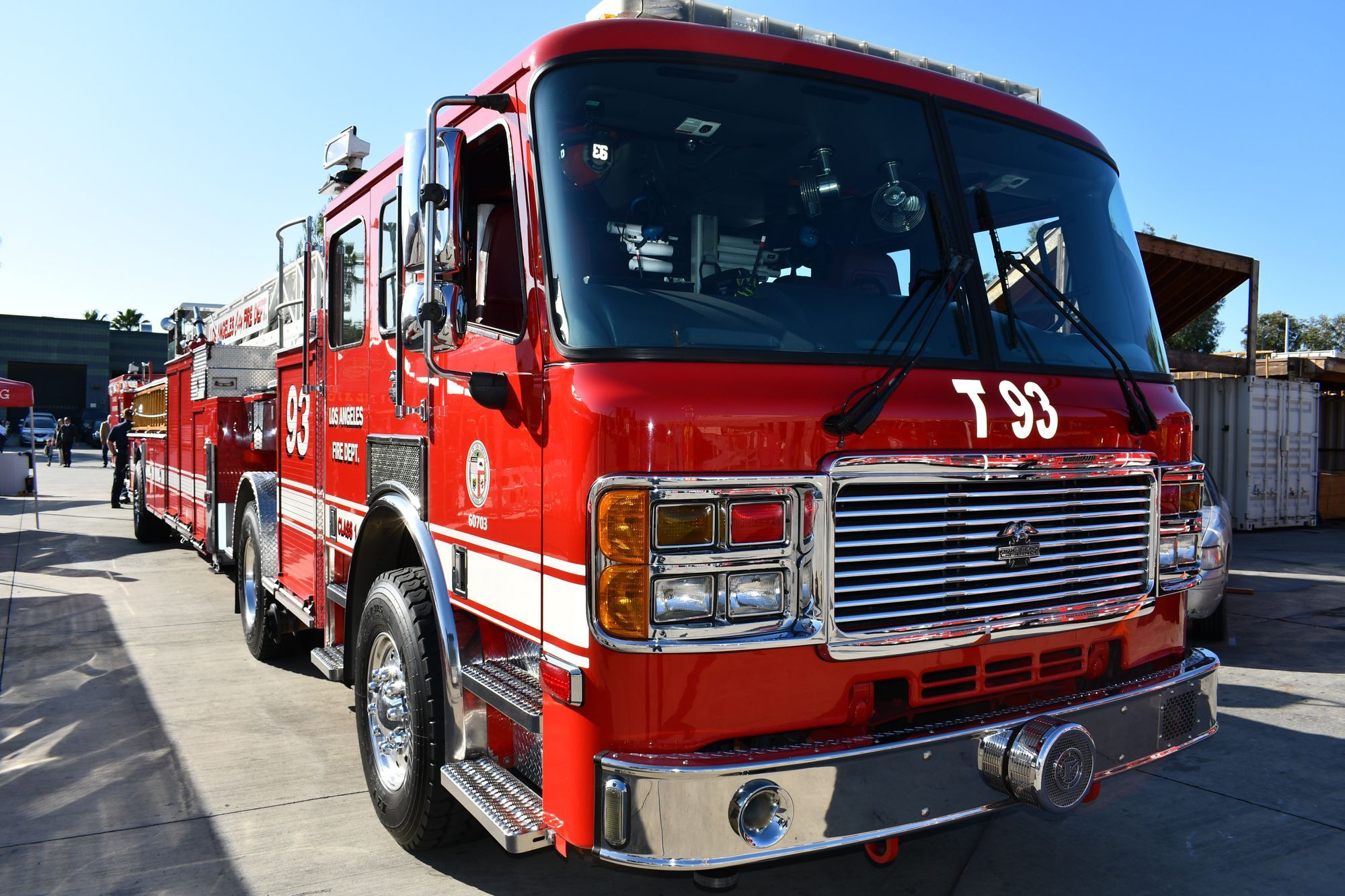Microenvironment #2 - Fire Truck

Welcome back to #guessthatmicroenvironment! The goal of this series is to improve our collective understanding of how our daily actions and interactions influence the air that we breathe.
This clue was posted originally on April 20th, 2020.
#guessthatmicroenvironment
— QuantAQ (@quant_aq) April 20, 2020
* Total number concentration of 10-300 nm particles
* Inset 'zoom-in' glimpse of first 15 min
* What's causing the 12.4M?
* Ans post will go up tomorrow! pic.twitter.com/svZpnGcsH7
Heavy-duty diesel engine under load (accelerating)
This week, we posted a microenvironment that highlights the profound impact that individual sources can have on the air we breathe when we're in the wrong place at the wrong time.
About the data
The data was collected using a DiSCmini - an electrometer used to measure particles between 10-300 nm. Data were collected for a period of ~ 30 minutes and are shown with the local time on the x-axis and the total particle number concentration (particles per unit volume of air) on the y-axis. The DiSCmini also reports the average particle size for each 1 sec sampling interval.

Emergency vehicle emissions
There are moments in our daily routines where we can actually smell air pollution and (often times) our nose and brain convey the message "this smell is NOT good". If you are in a position where you can actively smell air pollution, you are likely in a regime with very high concentrations of particulates. This week's microenvironment highlights one such example.
Here, a fire truck (more specifically, a 1994 Pierce Arrow 100' rear-mount platform ladder truck), pulled out of a fire station and accelerated down the street directly ahead of the cyclist riding with the DiSCmini. In many ways, this represents a "perfect storm" with respect to cold-start, heavy-duty diesel emissions:
- Emergency vehicles need to get to where they are going quickly
- They tend to be large, heavy vehicles
- They spend a lot of time in the station awaiting emergency calls with the engine turned off
- The vehicles themselves can be quite old and, in some cases, are not equipped with modern emission control technologies (in this case a 1994 diesel engine, AQ data captured in Oct '12)
When combined, these factors result in a potent recipe for incomplete combustion. The extremely high particulate concentrations are a direct result of this heavy, cold engine operating under a very high load. The street- and sidewalk-level exposure is worsened due to the orientation of the 8" diameter exhaust pipe which is pointed directly out of the right-hand undercarriage of the truck. In the data above, the cyclist was moving in the same direction as the truck and biked through the plume for around sixty seconds. The surrounding environment had 3 story buildings on either side and the winds were relatively calm, limiting the dilution/dispersion of the plume.
About near-field emissions and particle size
Due to the internal pressures and temperatures of combustion engines, particles directly emitted out of the tailpipe are very, very small (in this example ~10-20 nm). It is important to understand the size of the particles you are breathing because that size can determine where inhaled particles end up in your body. The smaller the particle, the less inertia it has and the more adept it is at following gas streamlines through your upper respiratory tract. This means that instead of getting caught up in your nose-hair forest and exiting your nose as boogers, the smallest particles deposit deeper in your body (i.e. lungs). There are a number of other factors to consider beyond size (the particle's composition, shape, surface area, mass, and toxicity) when assessing its overall health impact, but number concentration and size are valuable data points for broader air pollution/environmental health discussions.
Use your air intuition
Emergency vehicles are essential and the dedicated folks that drive them save peoples lives everyday. They also have the advantage of being loud and bright to encourage people to get out of their way. From an air pollution perspective, putting some extra space between you and that exhaust pipe is ultimately in your best interest. Walking as little as ten to twenty meters further away from the roadside or positioning yourself upwind of the source can substantially lower your exposure to the plume. In this specific microenvironment, the cyclist should have used their air intuition and reversed course or biked down a side street as soon as they saw where the engine was headed. Learning to anticipate and proactively avoid high pollution micro-environments can go a long way toward reducing one's exposure. Next time you find yourself at a parade, sit on the upwind (wind at your back) side of the street!
About guess that microenvironment
The goal of this series is to help improve our air intuition by telling stories through air quality data. Ultimately, this series will serve as a resource for people to develop a sixth sense for detecting and avoiding air pollution in their daily lives.


